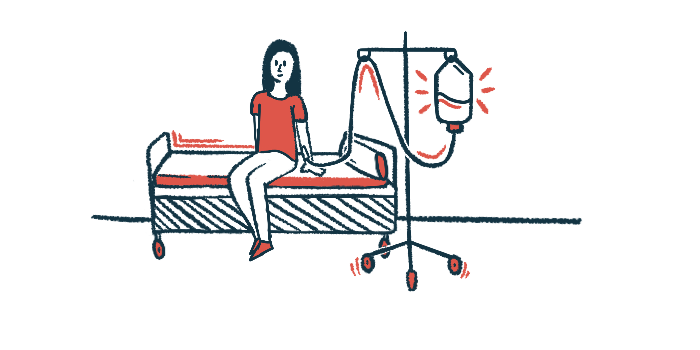Most PNH patients on Soliris still experience symptoms, study says
Up to 70% show signs of disease activity despite treatment at German hospital

Most people with paroxysmal nocturnal hemoglobinuria (PNH) who were treated with Soliris (eculizumab) at a hospital in Germany continued to show signs of disease activity despite treatment, a recent study reports.
“The findings of this long-term real-world study suggest that a considerable proportion of patients with PNH treated with [Soliris] did not achieve optimal clinical outcomes and experienced an ongoing burden of disease,” the researchers wrote. “Future exploration of other new therapies that improve patient outcomes could help to address remaining unmet medical needs.”
The study, “Long-Term Outcomes of Patients With Paroxysmal Nocturnal Hemoglobinuria Treated With Eculizumab in a Real-World Setting,” was published in the European Journal of Haematology. The work was funded by Roche, which is developing an experimental therapy for PNH, called crovalimab, through its subsidiary Genentech. Soliris is sold by AstraZeneca, which was not involved in the study.
Soliris designed to lessen blood cell destruction in PNH
Soliris is an approved treatment for PNH that works by blocking the activation of a group of immune proteins that form the complement system. In PNH, activation of the complement system leads to the destruction of blood cells, which in turn causes disease symptoms.
A team of scientists have now reported the outcomes of PNH patients who received treatment with Soliris at the University Hospital Essen, in Germany.
“The aim of this study was to describe the clinical profile and burden of disease of patients with PNH treated with [Soliris] by characterizing both short- and long-term clinical and laboratory outcomes,” the team wrote.
A total of 76 patients with a median age of 37.5 years were included in the analysis. Half of them were female and about a third (34%) had aplastic anemia — a bone marrow disorder that sometimes co-occurs with PNH.
The median time from PNH diagnosis to starting treatment with Soliris was less than two years (558 days); most patients (74%) started treatment within five years of being diagnosed. All of the patients in the study were on Soliris for at least six months and were followed for a mean of 5.59 years.
The researchers analyzed response rates in six-month blocks, though not all patients had data available in every timeframe.
For example, data for the first six months of treatment were available for 57 patients. Most of these patients responded to treatment, meaning that treatment eased their symptoms to a certain extent. Yet, most patients who responded to treatment were nonetheless reporting noteworthy symptoms, and 18% did not respond to treatment at all.
Additionally, 13% of patients had breakthrough symptoms (new symptoms that arose during treatment), and 8% experienced breakthrough hemolysis (red blood cell destruction). About one in three (38%) patients required a blood transfusion in the first six months of treatment.
4% to 16% showed no treatment response
Data from subsequent six-month blocks up to about five years of follow-up generally showed consistent trends. For any assessed period of time, upwards of 70% of patients were still experiencing symptoms despite treatment, with 4% to 16% showing no treatment response.
“Only 16% of patients achieved the optimal hematologic [blood] response of complete or major response within 24 weeks, and the maximum optimal response in long-term follow-up windows was 31%,” the researchers wrote.
During follow-up, rates of breakthrough symptoms ranged from 3% to 11%, and blood transfusion rates from 12% to 31%. Nearly two-thirds (63%) of patients were classified as transfusion-dependent during at least one block.
Laboratory analyses showed that, for all time periods assessed, the majority of patients had higher-than-normal levels of LDH, a marker of disease activity in PNH.
“This real-world study of patients with PNH found that a considerable proportion of patients treated with [Soliris] do not achieve an optimal clinical response,” the team wrote.









